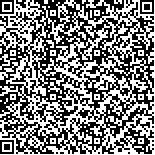| 引用本文: | 孟子豪,杨德国,胡飞飞,陈康,刘璐,向邈,李学梅.禁渔初期鄱阳湖流域柘林水库鱼类资源时空分布格局及影响因子.湖泊科学,2023,35(6):2071-2081. DOI:10.18307/2023.0635 |
| Meng Zihao,Yang Deguo,Hu Feifei,Chen Kang,Liu Lu,Xiang Miao,Li Xuemei.Fish resources spatio-temporal distribution patterns and controlling factors in Zhelin Reservoir, Lake Poyang Basin during early fishing ban period. J. Lake Sci.2023,35(6):2071-2081. DOI:10.18307/2023.0635 |
|
| |
|
|
| 本文已被:浏览 2291次 下载 2466次 |

码上扫一扫! |
|
|
| 禁渔初期鄱阳湖流域柘林水库鱼类资源时空分布格局及影响因子 |
|
孟子豪, 杨德国, 胡飞飞, 陈康, 刘璐, 向邈, 李学梅
|
|
中国水产科学研究院长江水产研究所, 农业农村部淡水鱼类种质资源与生物技术重点实验室, 武汉 430223
|
|
| 摘要: |
| 为了解长江十年禁渔初期鄱阳湖流域柘林水库鱼类资源时空分布格局及其影响因子,于2020年9月(秋季)、12月(冬季)和2021年4月(春季)、7月(夏季),采用渔获物抽样和水声学探测相结合的方法对柘林水库鱼类群落和资源密度的时空动态进行调查,并利用广义可加模型(generalized additive model, GAM)识别了影响鱼类资源变化的关键因子。调查期间共采集鱼类5目12科36属54种,鲤形目鱼类占比最高为70.38%,鳙(Hypophthalmichthys nobilis)、(Hemiculter leucisculus)和黄尾鲴(Xenocypris davidi)为优势种。水声学探测结果表明,鱼类密度(ind./1000 m3)具有明显的时空异质性,春、夏季(10.42±17.57和16.34±11.89)显著高于秋、冬季(2.74±3.33和2.02±5.07),中游(3.18±4.76)则显著低于上、下游(11.20±15.66和5.37±9.33)。GAM模型对鱼类密度的总偏差解释率为84.6%,其中经纬度、季节、叶绿素a浓度和溶解氧对鱼类密度的影响效应显著,水深和总氮的影响不显著。鱼类主要分布在29.12°~29.30°N,115.05°~115.15°E区域,显著影响鱼类分布的溶解氧和叶绿素a浓度范围分别为9~12 mg/L和5~15 μg/L。柘林水库鱼类呈现小型化趋势,为维护生态系统稳定性和鱼类多样性,后续需加强对鱼类群落结构和时空分布格局影响的机制方面的相关研究。 |
| 关键词: 鱼类资源 水声学 广义可加模型 鄱阳湖流域 柘林水库 时空分布 |
| DOI:10.18307/2023.0635 |
| 分类号: |
| 基金项目:财政部和农业农村部现代农业产业技术体系专项资金项目(CARS-46)和中国水产科学研究院基本科研业务费院级湖库增殖渔业创新团队项目(2020TD57)联合资助。 |
|
| Fish resources spatio-temporal distribution patterns and controlling factors in Zhelin Reservoir, Lake Poyang Basin during early fishing ban period |
|
Meng Zihao, Yang Deguo, Hu Feifei, Chen Kang, Liu Lu, Xiang Miao, Li Xuemei
|
|
Yangtze River Fisheries Research Institute, Chinese Academy of Fishery Sciences, Key Laboratory of Freshwater Biodiversity Conservation, Ministry of Agriculture and Rural Affairs of China, Wuhan 430223, P.R. China
|
| Abstract: |
| A combination of multi-mesh gillnet and hydroacoustic survey was undertaken in September (Autumn), December(Winter) 2020 and April(Spring), July (Summer) 2021 in Lake Poyang Basin, Jiangxi Province to understand the spatiotemporal distribution patterns of fish resources and its controlling factors in Zhelin Reservoir during early fishing ban period. Generalized additive model (GAM) was used to identify the key factors affecting the dynamics of fish resources. During the survey, a total of 5440 individuals were recorded, including 54 species representing 36 genera, 12 families and 5 orders with the dominant Cyprinidae including Hypophthalmichthys nobilis, Hemiculter leucisculus and Xenocypris davidi for 70.38%. The hydroacoustic survey indicated that fish density (ind./1000 m3) showed significant spatial-temporal heterogeneity, which was significantly higher in spring and summer (10.42±17.57 and 16.34±11.89) than those in autumn and winter (2.74±3.33 and 2.02±5.07), The fish density in the midstream (3.18±4.76) was significantly lower than those in the upstream and downstream (11.20±15.66 and 5.37±9.33). The total deviation explanation rate of GAM model for fish density was 84.6%, in which the latitude and longitude, season, chlorophyll-a concentration and dissolved oxygen had significant effects on fish density, while the effects of water depth and total nitrogen were not significant. Fish resources were mainly distributed in the regions of 29.12°-29.30°N and 115.05°-115.15°E, and the ranges of dissolved oxygen and chlorophyll-a were 9-12 mg/L and 5-15 μg/L, respectively. There was a trend of miniaturization of fish species in Zhelin Reservoir. In order to maintain the ecosystem stability and fish diversity, it is necessary to strengthen research on the mechanisms that affect the structure and spatiotemporal distribution pattern of fish communities in the future. |
| Key words: Fish resources hydroacoustic generalized additive model Lake Poyang Basin Zhelin Reservoir spatio-temporal distribution |
|
|